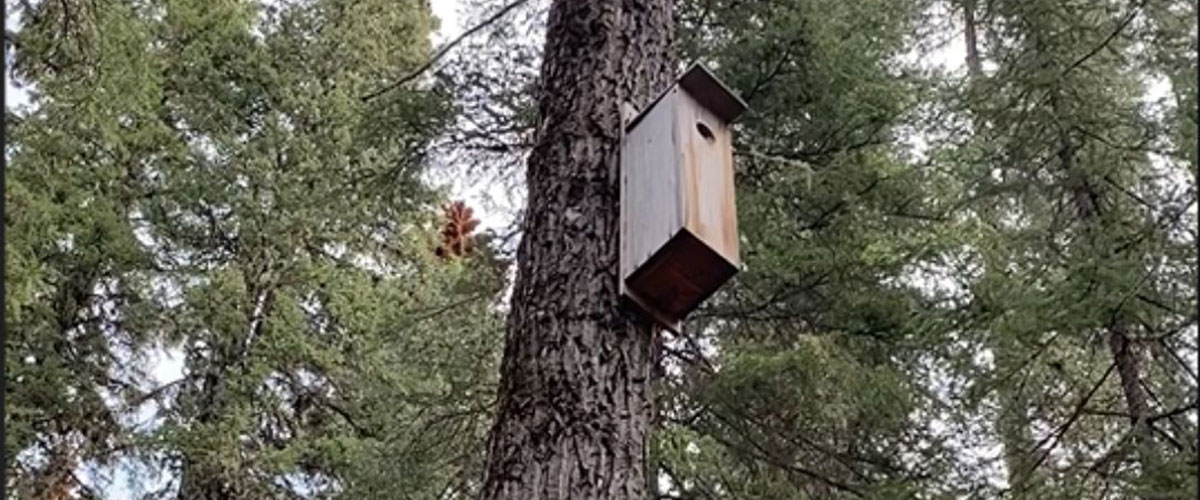A Tale of Two Curators
August 1, 2023
by Julie Helwig, Communications Officer
Find out why an Ornithologist and Quaternary Palaeontologist are working together to study local nesting boxes.
What do an Ornithologist and a Quaternary Palaeontologist have in common? It turns out, more than you’d think.
Earlier this summer, our Assistant Curator of Ornithology, Corey Scobie and Curator of Quaternary Palaeontology, Chris Jass, accompanied by some additional staff from our Learning and Marketing teams, set out west of the city to check in on a long-term project they’ve been working on together.
|
Image
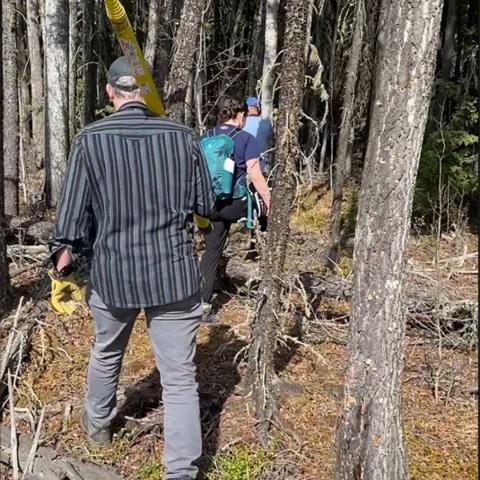
|
Image
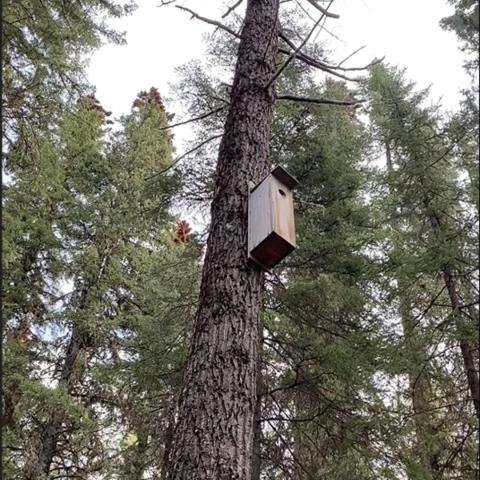
|
In February of 2020, Chris and Corey installed a handful of nesting boxes in a forested area outside of Edmonton as part of their research. Since then, the pair have been checking in on the boxes 2-3 times each year to see if any residents have made themselves at home and clean them out when needed.
|
Image
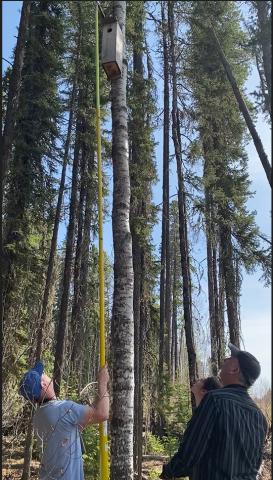
|
Because the boxes are attached high up in the trees, a special extendable pole with a camera attached to its end is required to peek inside these boxes to see what’s inside. The camera then transmits the images from inside the nest to a small handheld screen.
|
Image
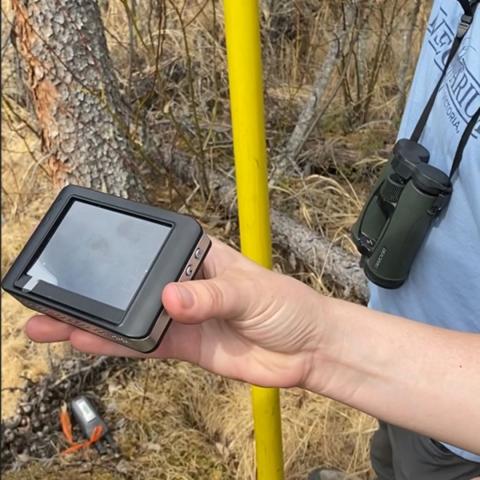
|
So, why are our curators so interested in these nest box inhabitants?
The idea for this project came from some collaborative discussion, through which Chris and Corey discovered they each had research goals that worked perfectly together – Corey was interested in cavity nesting owls and Chris was interested in the bones of their prey.
As an Ornithologist, Corey is working on collecting data on the use of nest cavities, such as the ones created by Pileated Woodpeckers and used by Boreal owls. Gathering additional insights such as which owls and migratory species are using these cavities, and how often and for how long they are used will help researchers better understand the importance of these types of tree cavities to the many species that use them.
|
Image
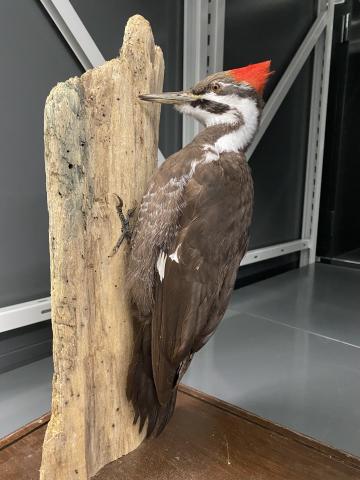
|
Now, as Quaternary Palaeontologists are usually more focused on fossils than live wildlife, you may be wondering what interest a Quaternary Palaeontologist like Chris has in studying Alberta’s current bird populations. Interestingly, it’s not the birds themselves he’s looking at, but the remnants of their meals. More specifically, Chris is looking to gather information from the pellets left behind by owls.
When owls eat prey like small rodents, they often regurgitate the undigested parts of the animal, like hair or bones, into a small pellet. From these pellets, Chris is hoping to find Heather Vole teeth to help understand the range of variation in shape and structure of the teeth for comparison with fossil Heather Vole teeth discoveries. This will help researchers determine whether some of the fossil teeth that have been discovered belong to a previously unidentified species.
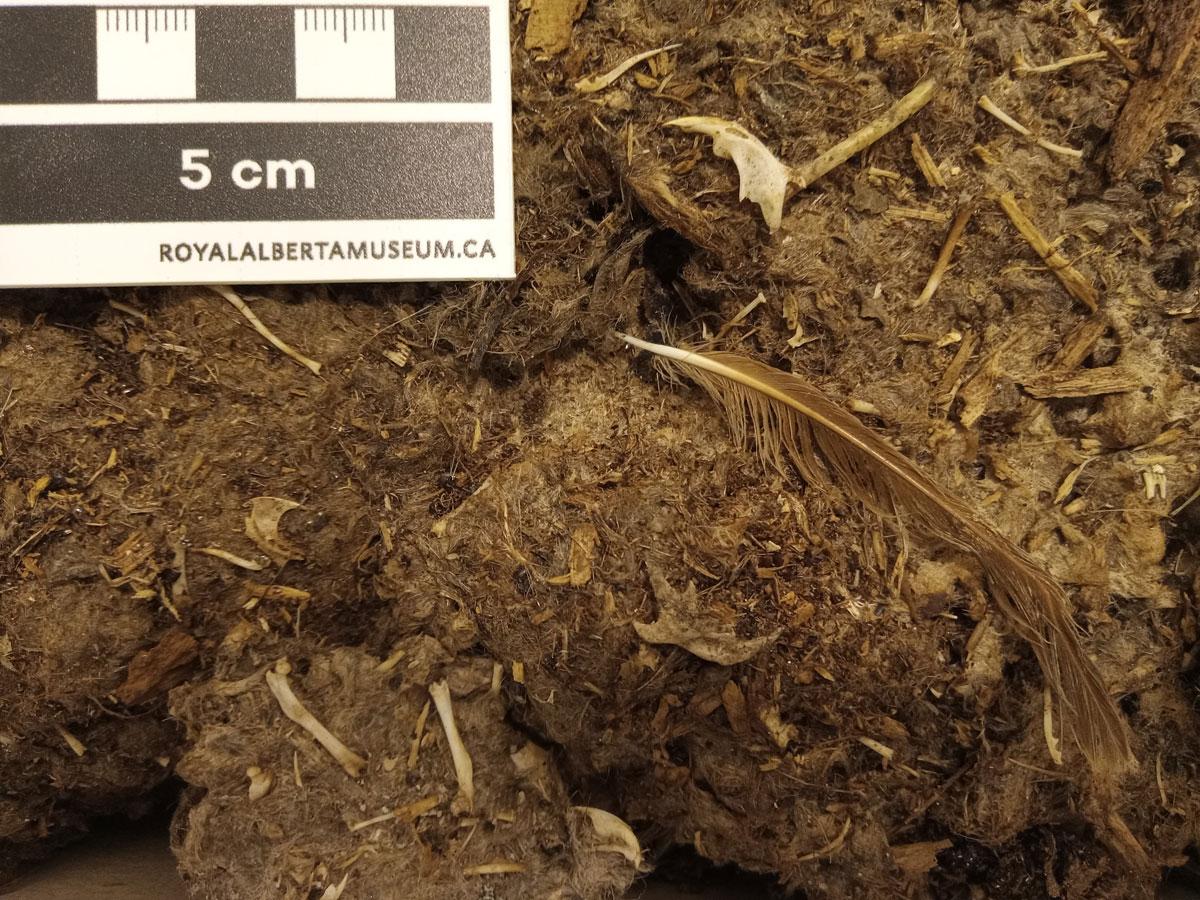
During their check-in this summer the nest box “neighbourhood” was relatively quiet, though one box appeared to have attracted a squirrel and her babies as a cozy place to nest. In another box the group discovered the remains of two small rodents, which was likely stored there by an owl nesting somewhere nearby. The crew will visit again to search nearby natural cavities to see if they can find the nest of the owls that left the prey remains.
Although the boxes haven’t produced results yet, signs show owls are starting to use the boxes. In addition to a box being used to cache prey this year, two years ago a small owl used a box as shelter during the winter as it plucked, consumed, and regurgitated the remains a dark-eyed junco. Increased use of the nest boxes by owls suggests the potential for them to become a temporary owl home is high.
With plenty of opportunity for useful data collection, Chris and Corey will continue monitor these nest boxes and make regular visits to their feathered friends’ habitat to see who’s hanging around.
